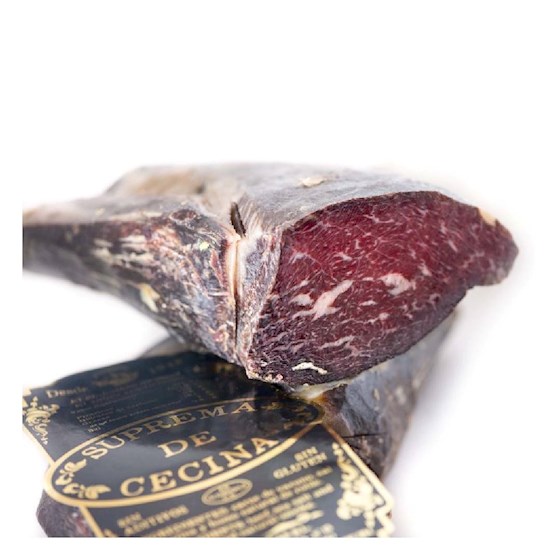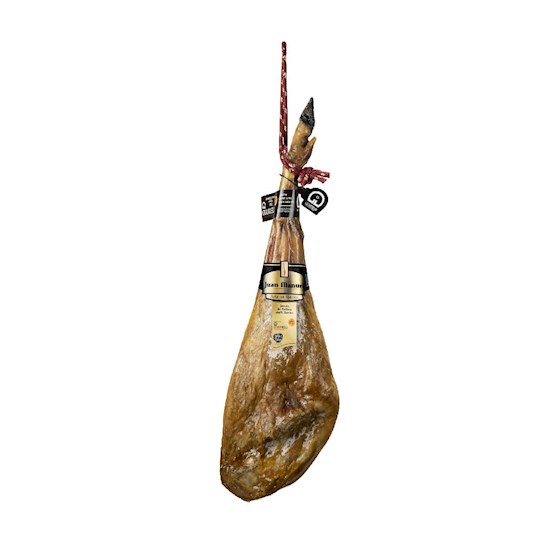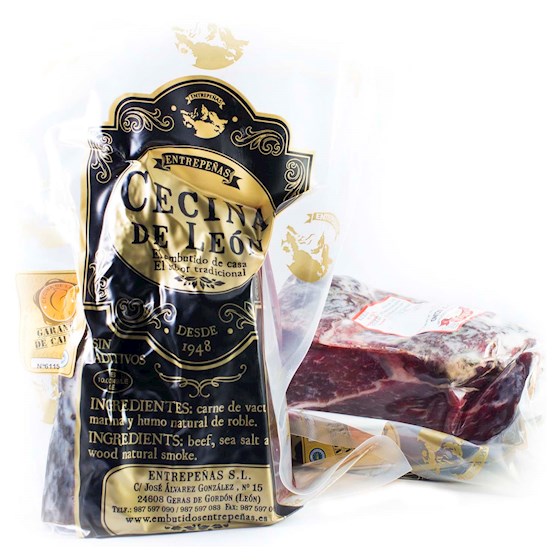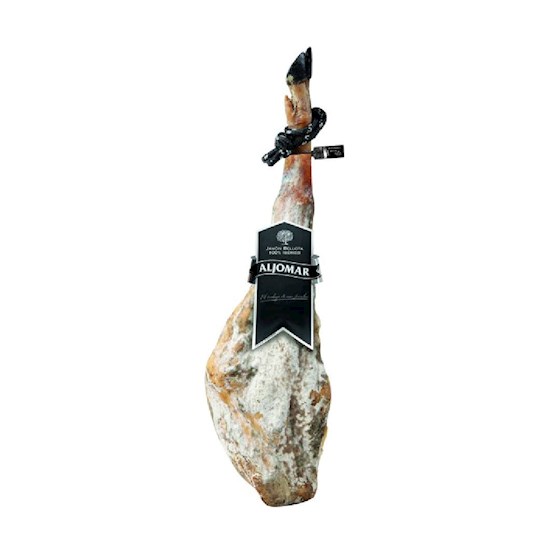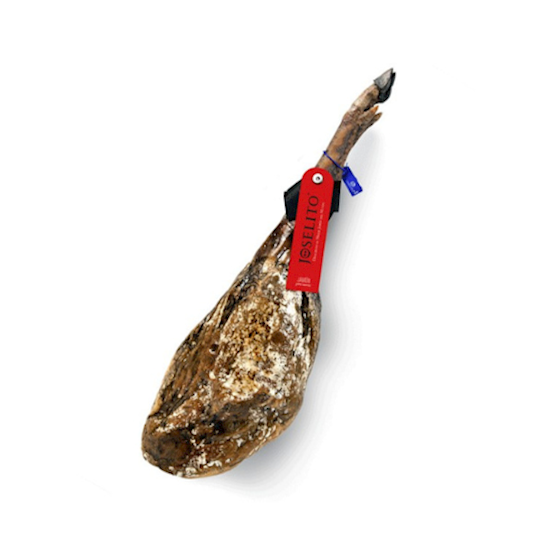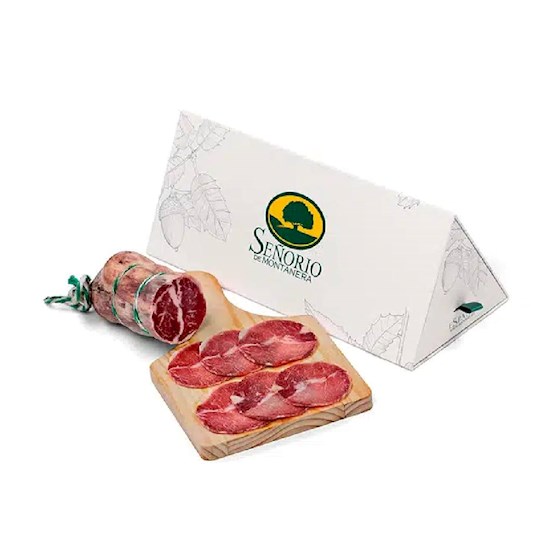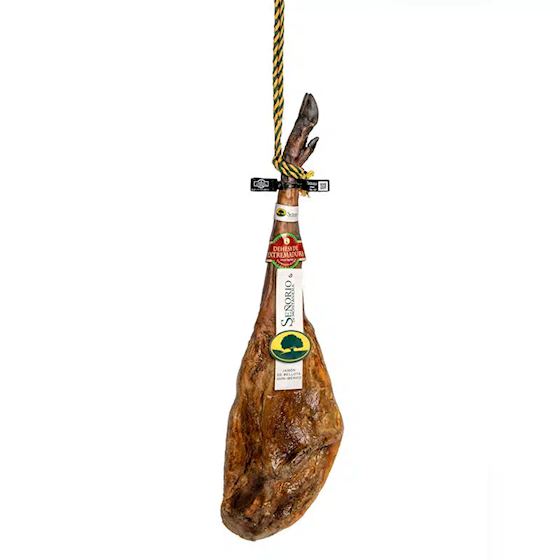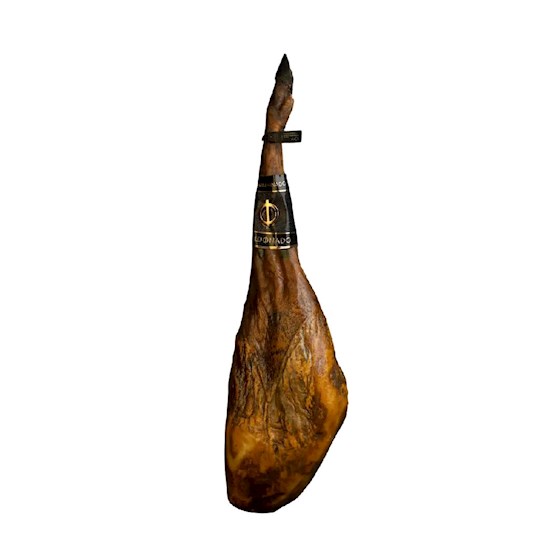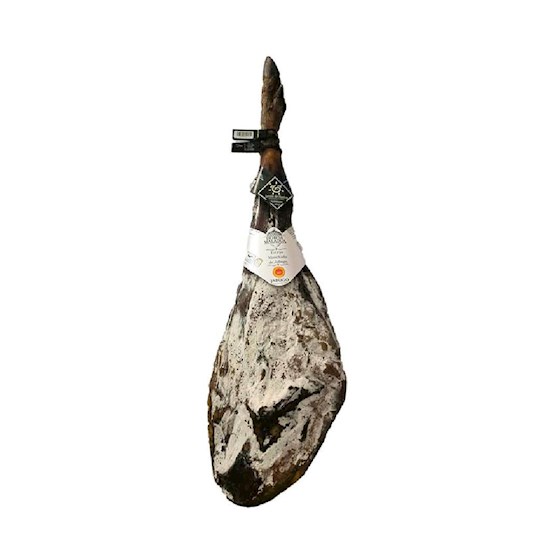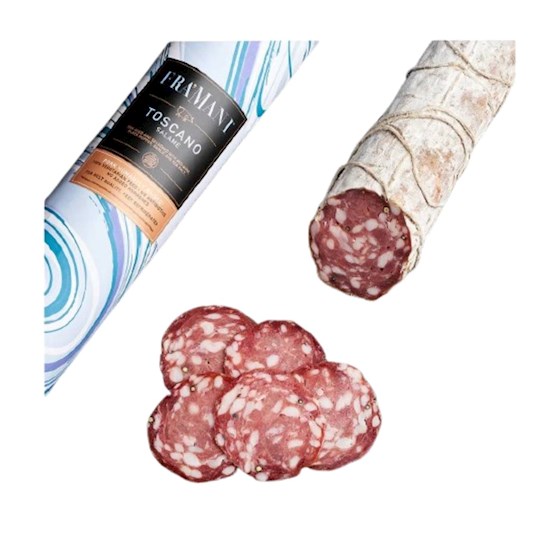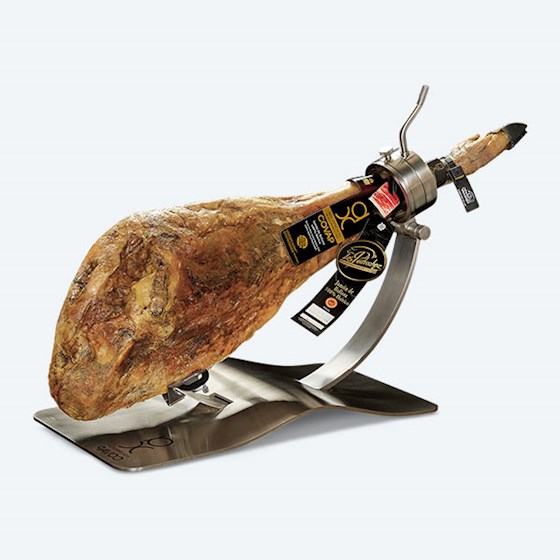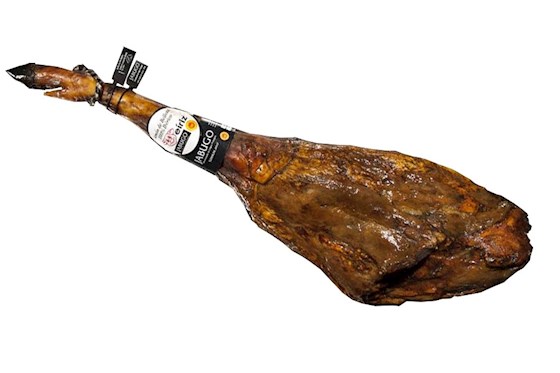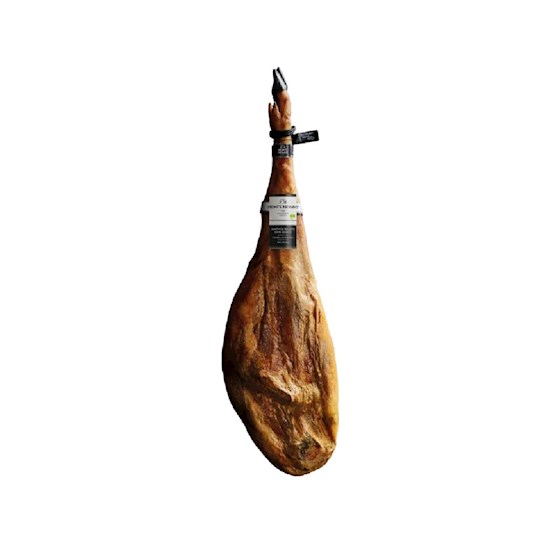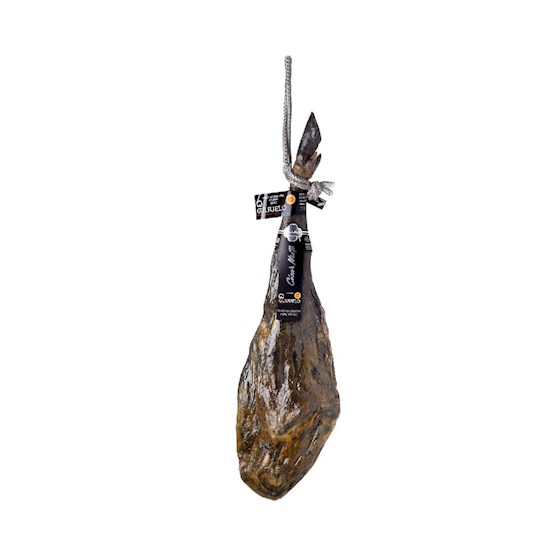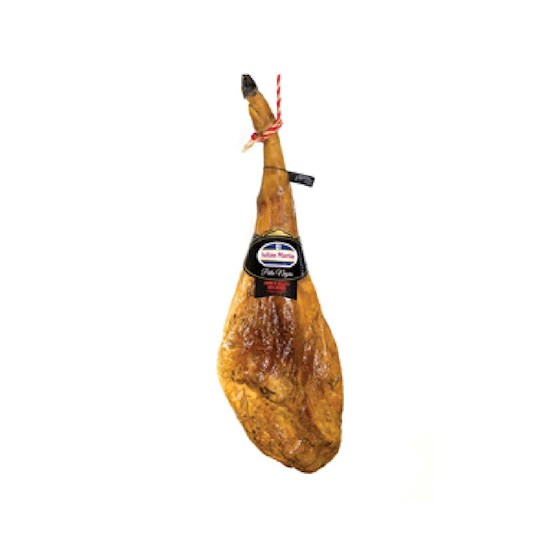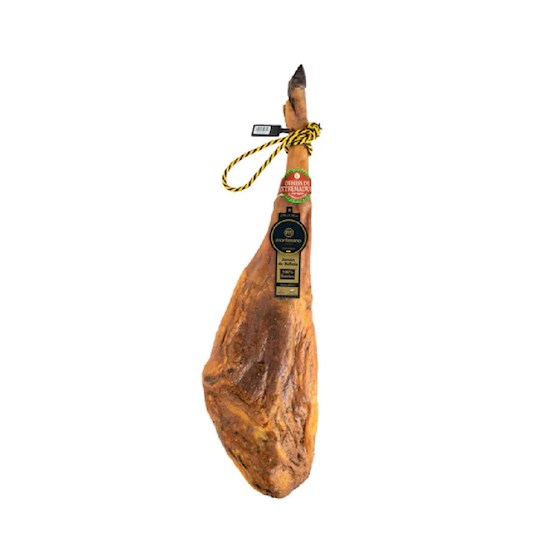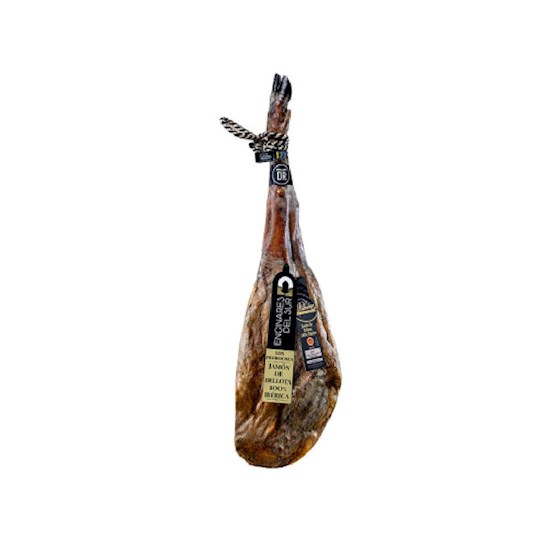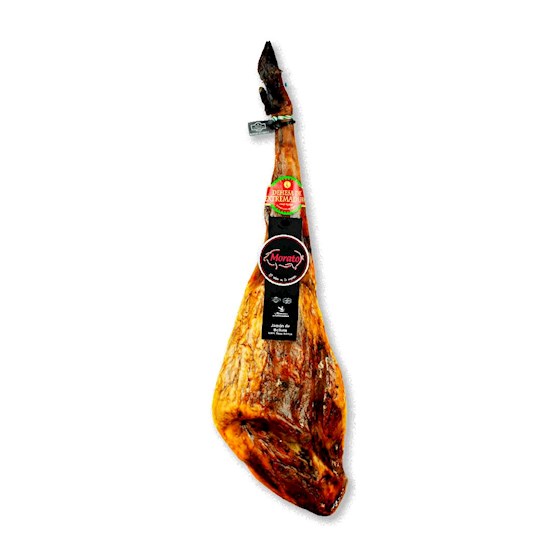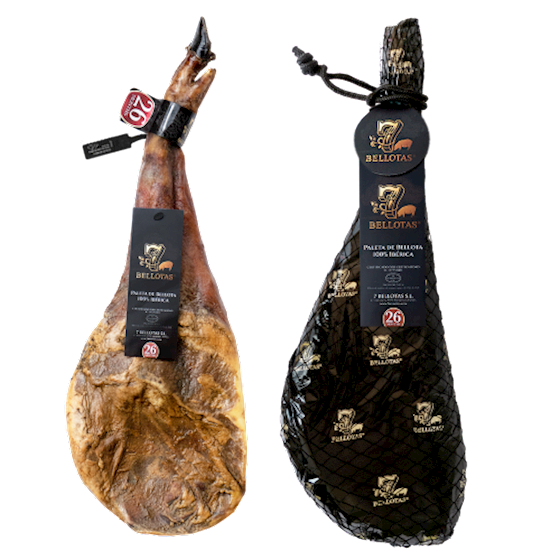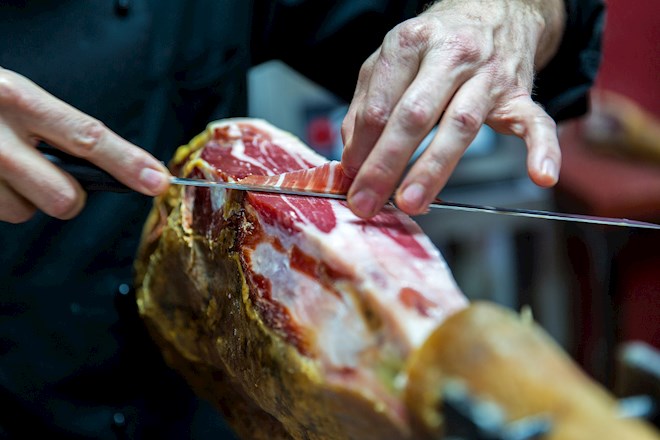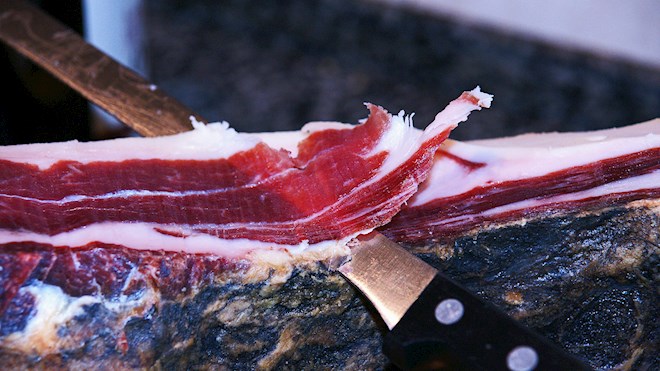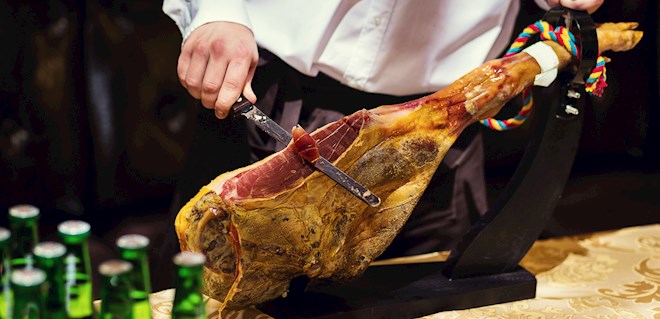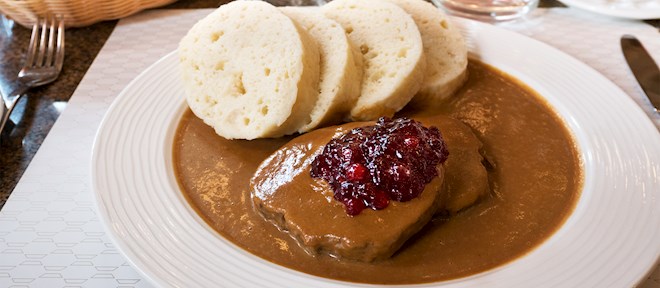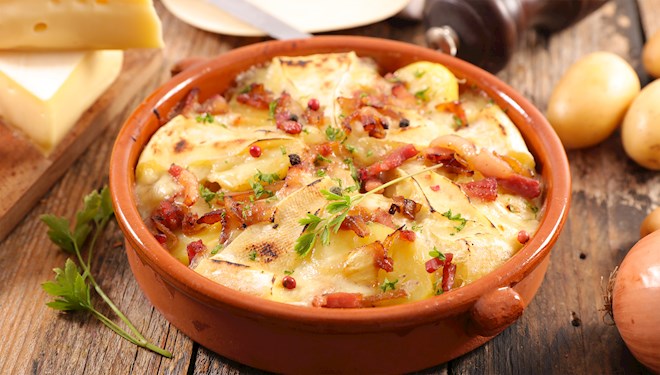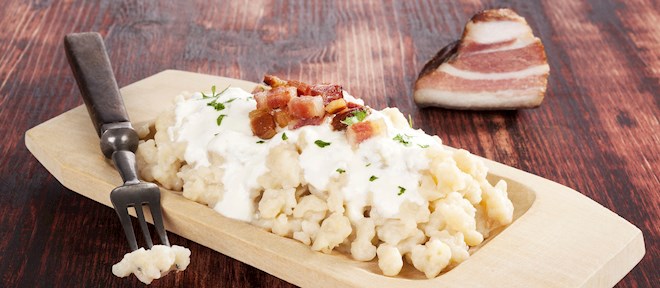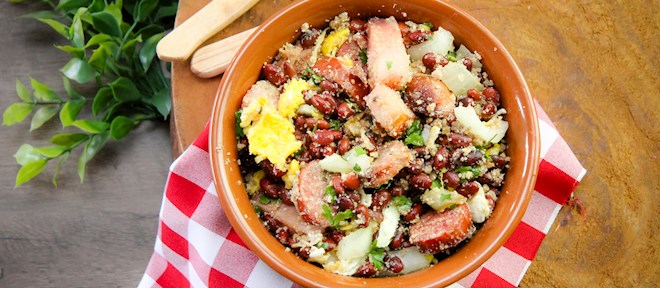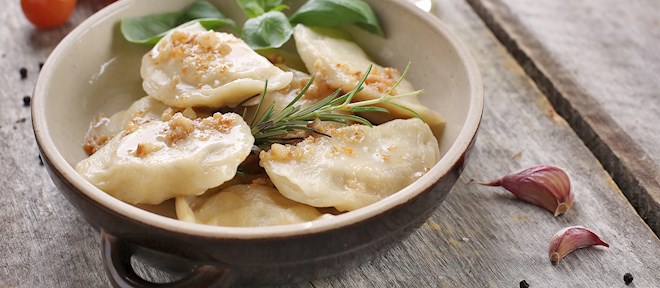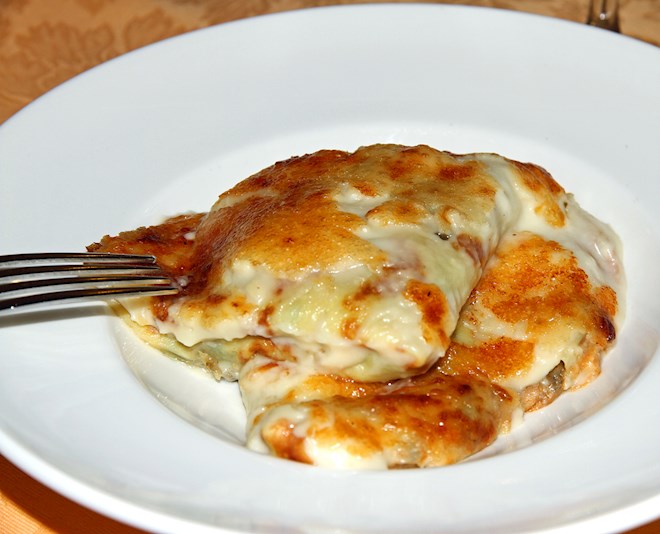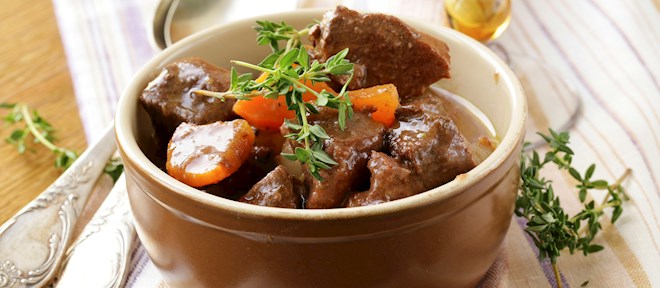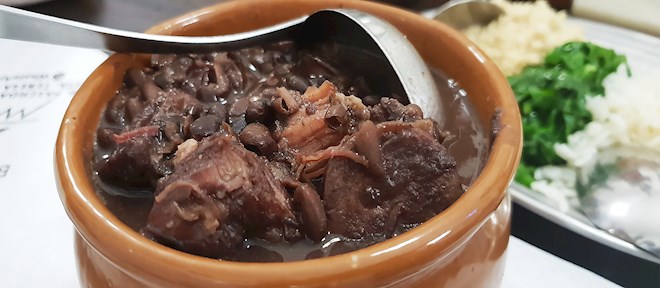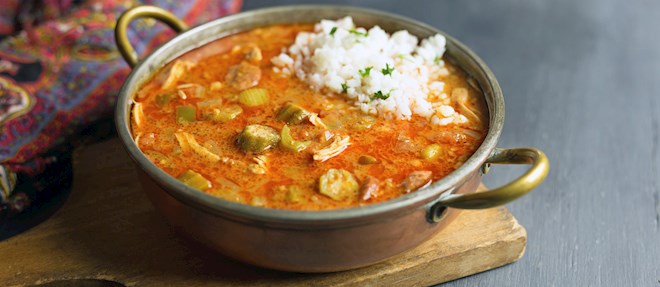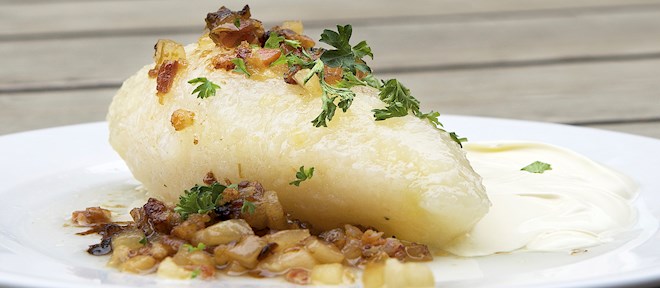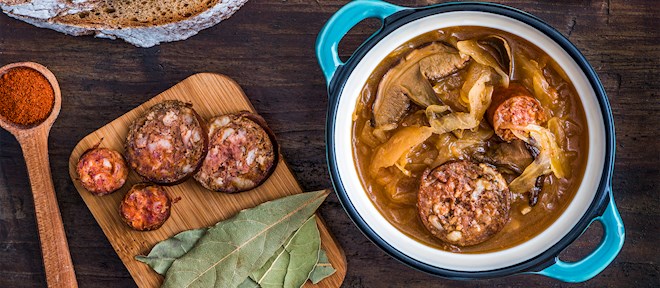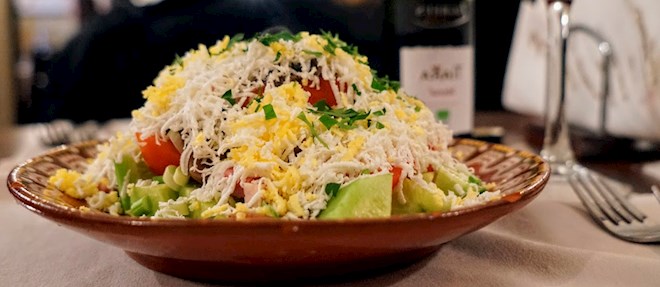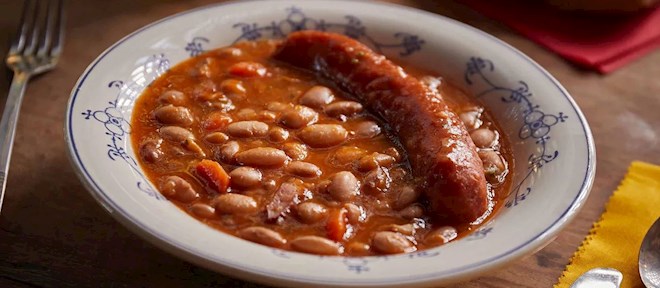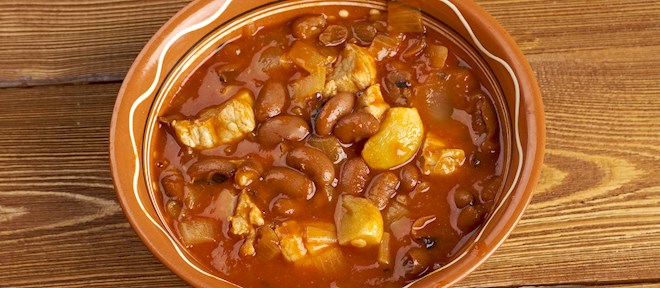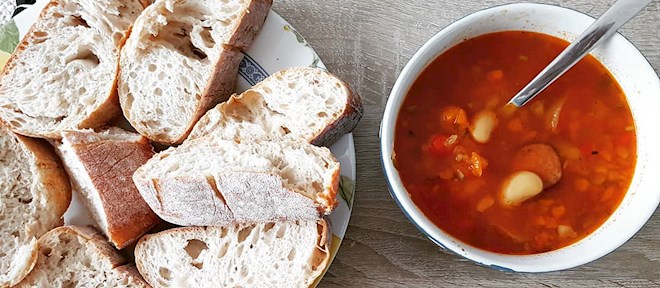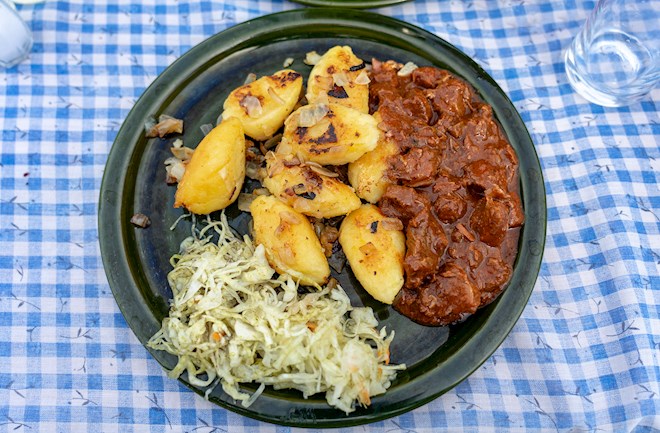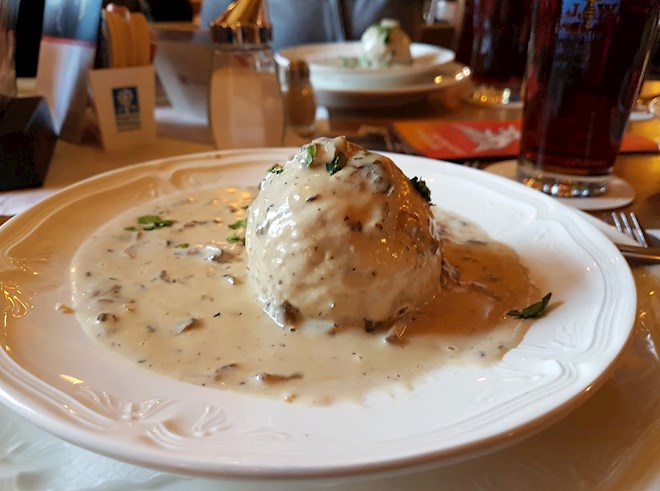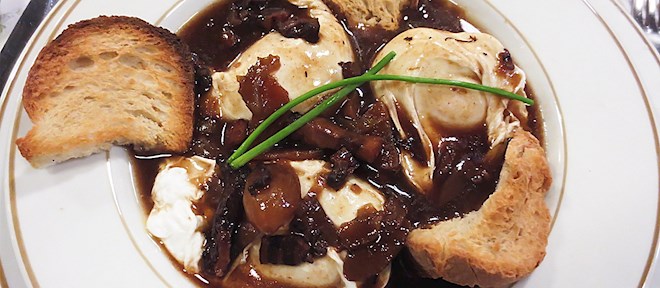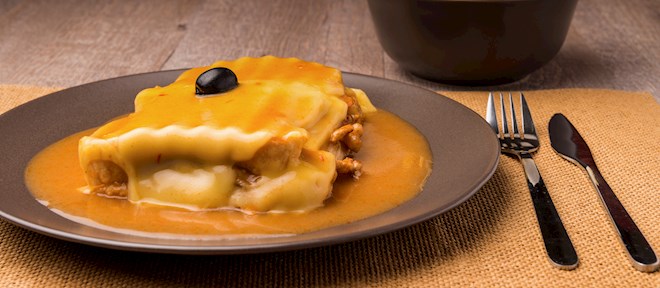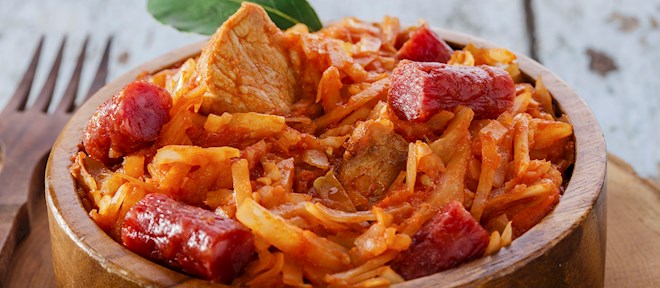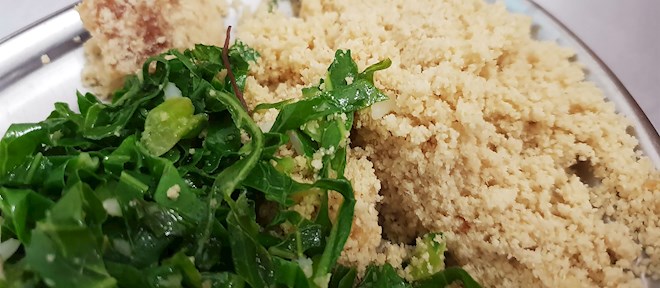Cured Meat
Cured Meats & producers

- View all recommended products
Cured Meats

Jamón ibérico de bellota
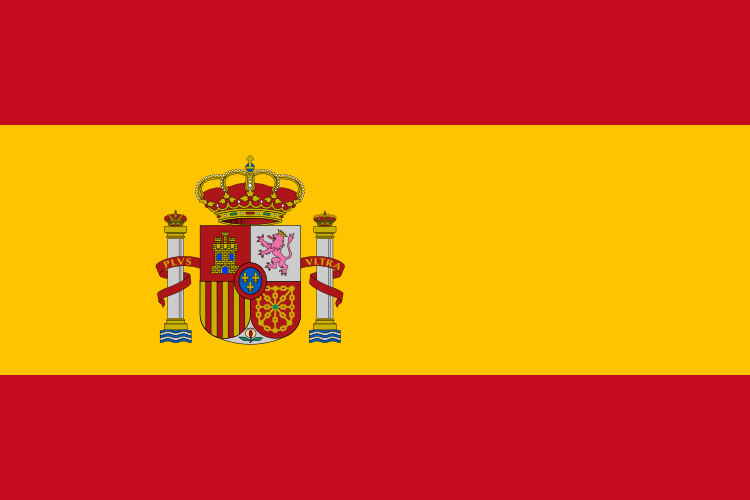
This variety of Iberian ham is produced with meat coming from acorn-fed Iberian pigs that are either 75% or 50% pure Iberian breed, meaning they have been crossbred with other pigs such as the Duroc breed. As in the case of jamó... READ MORE
Jamón 100% ibérico de bellota

Regarded as the most exquisite variety of Iberian ham, or jamón ibérico, this ham is made with the meat of 100% purebred black Iberian pigs that have been roaming freely across oak pastures (Dehesa) and feeding on a... READ MORE
Jamón Ibérico

Jamón Ibérico is a unique ham produced both in Spain and in Portugal. It is made from black ibérico pigs who eat a diet of corn, acorns, and other feed, most of them roaming freely across the pastures. As a result, the cured h... READ MORE
Presunto do Alentejo
Alentejo ham is a regional specialty made from the legs and shoulders of Alentejo pigs produced in the districts of Castelo Branco, Portalegre, Santarém, Évora, Beja, Setubal, and Faro. These areas typically have ho... READ MORE
Prosciutto di Parma
Carefully crafted with the same diligent care since the Roman times, Prosciutto di Parma is a true masterwork of time and tradition, and a gold standard of Italian prosciutto. The pigs of the Large White, Landrace and DurocREAD MORE
Jamón Serrano
Jamón Serrano is a cured ham produced using the traditional methods dating back to Roman times. This ham has a bright pink to purple color and shiny appearance when cut. This ham is made in four separate steps that include salting,... READ MORE
Prosciutto di San Daniele
Produced in the hilly area around the town of San Daniele in the province of Udine, Prosciutto di San Daniele is even sweeter and darker in color with a more delicate flavor than in other varieties. In the Friuli-Venezia Giulia region, wh... READ MORE
Culatello di Zibello
Known as crème de la crème of Italian hams, with a tradition dating back to the 14th century, Culatello di Zibello is one of the most prized products of Parma nowadays made only with pigs raised in the regions of Emilia-Roma... READ MORE
Lomo bellota ibérico 100%
Lomo bellota ibérico 100% is a traditional pork loin. This type of pork loin is the most prized of them all because it's made from pure Iberian pigs. The flavor is the most intense of all the varieties and it has the most homogenous fat inf... READ MORE
Njeguška pršuta
Njeguška pršuta is a prosciutto variety originating from the area of Njeguši in Montenegro, hence the name. Pork ham is traditionally salted with sea salt, pressed in order to remove excess liquid, then smoked and dri... READ MORE
Jabugo
Named after a village nestled in the Sierra de Aracena y Picos de Aroche Nature Park, in the northern part of the Andalusian province of Huelva, Jabugo is a variety of the popular Spanish Ibérico ham or shoulder ham made from the m... READ MORE
Suho meso
Suho meso is a Bosnian specialty made by salting, drying, and smoking beef over oak fire. The meat should not be too dry, and it takes a special set of skills and knowledge to make the dish properly. Since it takes special expertise to pr... READ MORE
Presunto de Barrancos
Presunto de Barrancos is a cured ham specialty originating from the small town of Barrancos in southeastern Portugal. Barrancos ham comes from the Alentejo region, which has a Mediterranean microclimate with high summer temperatures, high... READ MORE
Presunto de Campo Maior e Elvas
The Campo Maior and Elvas ham and paleta are made using pork taken from Alentejo breed pigs raised in the municipalities of Campo Maior and Elvas in Portalegre. These pigs are raised outdoors, feeding on grasses... READ MORE
Presunto de Vinhais
Vinhais ham is a smoked pork meat specialty made from the hind legs of Bisaro pigs raised in the municipality of Bragança in Portugal. Vinhais presunto is made by first massaging raw cuts of pork to eliminate the internal ... READ MORE
Užička pršuta
Užička pršuta is a variety of smoked ham that has been traditionally prepared in the mountainous district of Zlatibor, namely in Čajetina, Užice, and Nova Varoš municipalities. This meat specialty came to be known as uži... READ MORE
Guijuelo
Guijuelo is a ham or a shoulder from pure-bred pigs of Ibérico breed made in the autonomous community of Extremadura. This ham has an exceptional ratio of sweet and savory flavors that are complemented by nutty and woody notes. It ... READ MORE
Kayserovan vrat Trakiya
Kayserovan vrat Trakiya is raw cured meat that's been produced in Bulgaria for more than 30 years from carefully selected fresh pork collar. This delicacy obtains its flattened shape during the drying and curing phase, when the meat is repeatedly ... READ MORE
Dalmatinski pršut
Dalmatinski pršut is a cured, smoked, and dried ham that is usually served thinly sliced alongside bread, cheese, or fruit such as melon. Unlike its Italian (prosciutto) and Istrian counterparts, the Dalmatian version of prš... READ MORE
Prosciutto Toscano
Produced under the same strict laws and traditions since the 15th century, Prosciutto Toscano is made exclusively with pigs born, bred, fattened and slaughtered in Tuscany. All pig legs must be provided with the breeder’s certificat... READ MORE
Jamón de Serón
Jamón de Serón is a ham made exclusively within the municipality of Serón from pigs of Duroc, Large White, Landrace, Blanco Belga, Pietrain or Chato Murciano breed... READ MORE
Cecina de León
Cecina de León is a cured meat product made from beef sirloin, centre leg, round and stifle. It is traditionally produced in the province of León. The production, which includes salting, curing and drying, can last for more ... READ MORE
Zgornjesavinjski želodec
Manufactured and cured only in the Upper Savinja Valley, this cured meat cut is the most prized delicacy of northeastern Slovenia. Želodec, which translates to 'pig stomach', was named after the tradition of stuffing the animal casings wi... READ MORE
Dehesa de Extremadura
Dehesa de Extremadura is a cured ham and shoulders made of pure-bred Ibérico-pigs meat produced in the provinces of Cáceres and Badajoz. The manufacturing process takes at least 18 months for hams and 12 months for the shoul... READ MORE
Bresaola della Valtellina
The origins of this air-dried, salted beef charcuterie can be traced back to the late Middle Ages, when the techniques of preserving beer, lamb and game had already spread throughout the Lombardian Valtellina valley and Alps. This lean and tender ... READ MORE
Speck Alto Adige
Lighter in flavor than its heavily smoked Alpine counterparts, but more robust than the delicate Mediterranean prosciuttos, Speck is the most prized food product of the autonomous Trentino-Alto Adige, Italy's northernmost region also know... READ MORE
Istarski pršut
One of the staple ingredients of Croatian cuisine, Istrian pršut or prosciutto is a traditional cured and dried ham. It is usually served thinly sliced as an entree, alongside some artisanal bread and sheep or goat milk cheese. Its producti... READ MORE
Coppa di Parma
Depending on the exact area of production and its features, this deli meat is often given other names such as Capocollo, Lonza or Lonzino. Many historical sources indicate that Coppa di Parma has been in product... READ MORE
Prosciutto di Modena
According to earliest historical evidence, the origins of Modena ham date back to the time of Celts and later the Romans whose legions used to stock up on salted pork meat before setting off on military expeditions. Traditionally, this ham is prod... READ MORE
Montreal-style smoked meat
Montreal-style smoked meat is a type of deli meat that originated in Montreal, Canada. It's similar to corned beef and pastrami but has its own distinct preparation process and flavor profile. The meat, typically a high-quality cut of beef brisket... READ MORE
Drniški pršut
Considered to be of the best quality of all the Croatian prosciuttos, Drniš prosciutto is a cured, smoked and dried ham produced in this region since the 14th century. It is scientifically proven that the submediterranean microclimate condi... READ MORE
Jambon sec de Corse
Jambon sec de Corse is a salted, dry-cured and matured ham made from the meat of the local Nustrale breed of pork, coming from the French island of Corsica, where the soil and climate favorably influence the taste of the meat. Th... READ MORE
Zlatiborska pršuta
Zlatiborska pršuta is a traditional smoked ham hailing from the mountainous region of Zlatibor, and it is usually associated with the village of Mačkat. Following a century-old method of preparation, this meat specialty is typicall... READ MORE
Pastarma Govezhda
Pastarma govezhda is dried raw meat that has been produced in Bulgaria since the 19th century. The word pastarma is of Turkish origin and means pressed and salted dried meat. Despite production becoming industrialized, the tradit... READ MORE
Jamón ibérico de cebo
This Iberian ham variety comes from black Iberian pigs of either 75% or 50% Iberian breed. The difference between this variety and the other two Iberian ham varieties, namely the bellota and the cebo de campo varieties, which are... READ MORE
Coppa Piacentina
The recipe for this traditional Italian deli meat has been passed down for generations, and in every country farmhouse, Coppa was considered a special treat, eaten for holidays and other special occasions. Some of those recipes found around the Nu... READ MORE
Prague ham (Pražská šunka)
Pražská šunka is a traditional ham made on the bone, boneless, or tinned, in the Czech Republic. The boned variety must not exceed 10 kilograms in weight and has one side covered with golden yellow skin. The meat is pink and... READ MORE
File Elena
File Elena is a dried raw meat product made from chilled or frozen pork tenderloin. The name refers to the city of Elena in northern Bulgaria. When the country was a part of the Ottoman Empire, it was almost impossible to sell pork produc... READ MORE
Jambon d'Auvergne
Jambon d'Auvergne is a dried pork ham made from the hind leg, produced in the French region of Auvergne (departments of Cantal, Haute-Loire, Lot, Corréze and Puy-de-Dôme). The ham is dried, salted and matured for at least eig... READ MORE
Dishes with Cured Meat
Cocido lebaniego

Cocido lebaniego is a traditional dish originating from the Liébana area in Cantabria. The stew consists of local chickpeas, potatoes, and cabbage with meat from the pig slaughter such as chorizo, bacon, and morcilla. Breadcrumbs, parsley, ... READ MORE
Sarma

One of the staples of traditional Turkish cuisine, sarma consists of a filling that is snugly surrounded by leaves or leafy vegetables. There are numerous versions of this dish but the mixture typically combines ingredients such as minced meat, ri... READ MORE
Żurek

Żurek is a traditional soup characterized by its distinctively sour taste, which comes from sour leavening, or the fermentation of bread and rye flour. The soup also contains meats such as sausages, bacon, or ham, and vegetables such as potatoes a... READ MORE
Svíčková

This delicious beef dish is one of the best-known creations of Czech cuisine. It is made with marinated braised beef, usually tenderloin, served in a creamy vegetable sauce made with carrots, celeriac, and parsley root. The dish is usually spiced ... READ MORE
Tartiflette

One of the best-loved dishes of the Alps, tartiflette is a mouth-watering gratinated potato dish from the mountainous region of Savoie in France. It is made with medium-sized potatoes, white wine, Reblochon cheese, onions, smoked salt pork (la... READ MORE
Bryndzové halušky

Bryndzové halušky is a modest and simple meal consisting of three elements: halušky, bryndza, and bacon. Halušky is a traditional name for a type of dumpling made with grated raw potatoes and flour. The second essential... READ MORE
Feijão tropeiro

Feijão tropeiro is a traditional dish from the Brazilian state of Minas Gerais. A favorite dish of cattle rangers (tropeiros), it consists of beans that are cooked with salted or dried meat, manioc flour, and various flavorings, he... READ MORE
Milanesa napolitana

Milanesa napolitana is a traditional Argentine dish originating from Buenos Aires. It consists of a milanesa steak that's breaded, fried, then topped with a slice of ham, tangy tomato sauce, and thick slices of mozzarella, which will melt under th... READ MORE
Sandwich de lomo

This is an extreme version of a steak sandwich – filled with thinly sliced lomo steak, tomatoes, onions, lettuce, mayonnaise, chimichurri sauce, ham, cheese, and a fried egg, sandwich de lomo or lomito is a behemoth of a sandwich th... READ MORE
Crespelle alla Valdostana

Hailing from the Aosta Valley, crespelle alla Valdostana is an Italian specialty that consists of savory, stuffed crêpes smothered in gooey Fontina cheese and béchamel sauce. The batter for the crêpes is made with a combination ... READ MORE
Vereshchaka

Vereshchaka is a traditional stew that has been prepared since at least the mid-18th century. Originally, it was a variation of machanka meat sauce. The stew is usually made with pork sausages, bacon, onions, flour, beer, and spices. Once... READ MORE
Beef bourguignon

Beef bourguignon is a rich and complex stew originating from the region of Burgundy in France. The star of the dish is a robust red Burgundy wine, which is used to soften and tenderize tough cuts of Charolais beef, along with savory additions such... READ MORE
Feijoada

Feijoada or feijoada completa is Brazil's national dish, a hearty stew featuring pork and black beans. The dish is consumed throughout the country, and every family in Brazil has their own, special recipe. Sautéed greens, cheese ro... READ MORE
Eggs Benedict

Eggs Benedict is a breakfast or brunch meal consisting of toasted halves of an English muffin that are topped with a slice of ham or bacon, a poached egg, and sauce Hollandaise. Although there are numerous theories about the origin of the dish, mo... READ MORE
Gumbo

There is nothing better to represent a true taste of New Orleans than gumbo, a filling soup that is usually prepared in large, black, iron pots. A cultural and gastronomical symbol of Louisiana, it can be based on seafood and okra with tomatoes, o... READ MORE
Tarte flambée

Tarte flambée is a thin, crispy, rectangular baked dough that is topped with tart and spreadable cheese (fromage blanc) or melting ripe cheese (Munster), créme fraîche, crispy bacon, and thinly sliced roasted ... READ MORE
Galette de Bretagne

Galettes de Bretagne are basically thin crépes from the Brittany region in northwestern France. These pancakes are made from buckwheat flour, then filled with various ingredients such as eggs, ham, mushrooms, and bacon. In Brittany... READ MORE
Cepelinai

Cepelinai is the national dish of Lithuania consisting of potato dumplings stuffed with spiced ground meat. The dumplings are traditionally quite large, served with bacon, pork rinds, and a sour cream and milk-based sauce after they have been boil... READ MORE
Kapustnica

This Slovakian sauerkraut soup is a hearty wintertime dish with a rich flavor, coming from a variety of added smoked pork products, sausages, and dried mushrooms. Kapustnica is related to a number of similar soups found throughout Eastern and Cent... READ MORE
Ovcharska salata

Ovcharska salata is a simple variation of the famous Shopska salata. Essentially, it is Shopska salata (cucumbers, tomatoes, onions, peppers, and cheese) with the addition of mushrooms, eggs, and ham. The salad is typically tossed with ve... READ MORE
Pasulj

Pasulj is a popular Serbian bean soup that is traditionally prepared with white beans. The beans are usually simmered with sausage, bacon, or ham, and vegetables such as onions and carrots. Paprika, bay leaves, and garlic are commonly used as seas... READ MORE
Frijoles charros

Frijoles charros is a simple Mexican dish consisting of beans, onions, tomatoes, chile peppers, and coriander. Meat such as bacon, ham, or salt pork is also used in the dish, but mostly as a flavoring agent. The combination of those ingredients is... READ MORE
Ciorbă de fasole cu afumătură

Rich and smoky, this white bean soup with smoked meat is a staple in most Romanian households. It consists of boiled dry white beans enriched with chunks of smoked meat such as pork knuckles or ribs, ham, or bacon, as well as root vegetables. Typi... READ MORE
Medianoche

Medianoche is a tasty Cuban sandwich filled with roasted pork, ham, Swiss cheese, and pickles. The bread is made with a sweet and soft egg dough which is very similar to the Jewish challah. The name of the sandwich means midnight... READ MORE
Rahmschwammerl

Rahmschwammerl is a traditional Bavarian dish made with a combination of mushrooms, bacon, onions, butter, flour, stock, heavy cream, sour cream, and garlic paste. It's best to use both fresh and dried mushrooms for this dish. The ingredients are ... READ MORE
Croque-monsieur

According to Larousse, this classic French hot sandwich consists of a thin slice of ham and melted cheese tucked between two pieces of sliced bread. The original first appeared on Parisian menus in 1910, and some claim it was invented by accident,... READ MORE
New England clam chowder

One of the earliest and quintessential American dishes, New England-style clam chowder is a creamy stew made with briny clams, chunks of salt pork, sweet onions, potatoes, and milk. The dish was invented by the Pilgrims who had landed near Plymout... READ MORE
Chivito

Chivito is a delicious sandwich from Uruguay and the country's national dish. Meaning little goat in Spanish, a legend says that in the 1940s, a chef in a restaurant was asked to prepare roasted goat, but since he didn't have one - he mad... READ MORE
Dalmatinska pašticada

Dalmatinska pašticada is a traditional Dalmatian dish consisting of beef (the traditional cut used being frikando, the toughest part of beef round) that is marinated in vinegar and spices for up to a couple of days, after which it&... READ MORE
Tiroler Gröstl

Tiroler gröstl is a traditional dish from Tirol, an Austrian region famous for its skiing and hiking courses. Like most Alpine dishes, gröstl is simple, yet rich, consisting of fried potatoes, onions, and bacon. Traditionally, the dish i... READ MORE
Australian Burger

An institution at many pubs, restaurants, and cafés in Australia, Australian burger with the lot first made its appearance in the 1940s, when beetroot started to be added to the burger alongside onions, tomatoes, lettuce, and meat.... READ MORE
Oeufs en meurette

Oeufs en meurette is a traditional dish originating from the French region of Burgundy. The dish consists of eggs that are poached in red wine, as the wine's acid keeps the eggs nice and tidy and prevents the spillage that can happen during poachi... READ MORE
Coq au vin jaune

Along with coq au Riesling, coq au vin jaune is another variation on the classic coq au vin. Instead of red wine, coq au vin jaune incorporates yellow or white wine. The best vin jaune is found in the French region of Jura, but a... READ MORE
Bocadillo de cerdo

Bocadillo de cerdo is a Spanish meat sandwich consisting of a loaf of bread that's filled with pork. A Spanish-style baguette (barra de pan) is the usual choice of bread for the sandwich, although burger buns, rustic bread, or pan Ga... READ MORE
Empanada de cordero

Empanada de cordero is a type of Spanish empanadas originating from the Balearic Islands. Unlike their Galician counterpart, Mallorcan empanadas have a dough that’s prepared without yeast. The dough is made with a combination of egg yolks, l... READ MORE
Francesinha

Traditionally associated with Porto, francesinha is a unique sandwich consisting of toasted bread, beef or pork, sausages, ham, and cheese, while the whole combination is then doused in a rich beer-infused tomato sauce. The sandwich has different ... READ MORE
Bigos

Polish cuisine prides itself in hearty and comforting dishes, and bigos–a traditional Polish stew–is one of the classic representatives of their culinary tradition. Also known as hunter’s stew, bigos is highly versatile,... READ MORE
Quiche Lorraine

Although quiches can be made with nearly anything, from meats and vegetables to seafood, herbs, and cheeses, the king among these delicious baked tarts is still the original quiche Lorraine, consisting simply of a shortcrust dough base that is fil... READ MORE
Farofa

Farofa is a common side dish in Brazil that no churrasco (barbecue) is complete without. It consists of toasted manioc flour dressed up with complementary ingredients such as onions, olives, nuts, crispy bacon pieces, dried jerky, or fres... READ MORE
Lists
- Top 100European Cured Meats
- Top 100Cured Meats in the World
- 35 Worst RatedCured Meats in the World
- Top 96Western European Cured Meats
- Top 36Central European Cured Meats
- Top 35Italian Cured Meats
- Top 74Spanish Cured Meats
- Top 14Southeastern European Cured Meats
- Top 12Portuguese Cured Meats
- Top 11French Cured Meats
- Top 10Croatian Cured Meats
- Top 10North American Cured Meats

